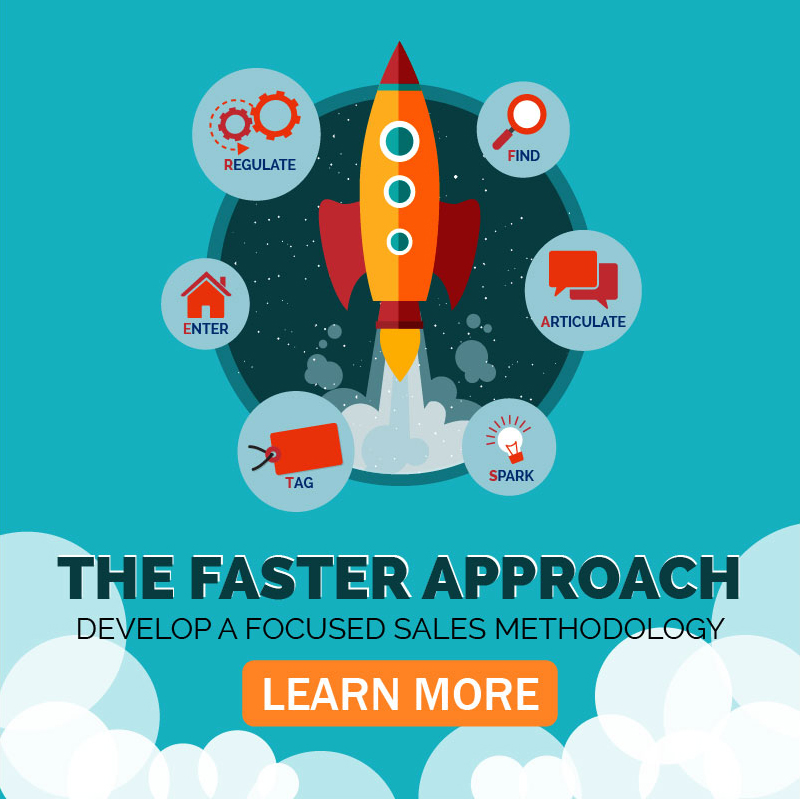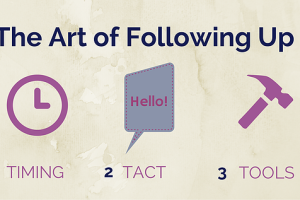According to 2016 data, there are an average of 6.8 stakeholders involved in most B2B purchase decisions. That means that at any given time, we have to convince five or six people besides our primary sales contact of the value of our proposition, or else the deal could fall flat. And even if we manage to secure one or two brand champions within a buyer organization, there are always other “off-radar” stakeholders who could easily undermine those relationships because of competing interests.
In other words, if we want to be successful in this brave new world of relationship sales, we have to broaden our vision of just who it is we’re selling to in the first place. If we aren’t prepared to sell to multiple parties from the outset — even in seemingly straightforward sales scenarios — then we face longer decision-making processes that cost us more to pursue. We end up with implementation delays that make it harder for us to get down to actual results, which may impact customer satisfaction and reduce referrals. Worse, we inadvertently contribute to an unfavorably convoluted customer purchasing process that, in the end, is more likely to yield a “no” or “maybe later” decision.
Decision fatigue is real. That’s why it’s imperative that our sales approach convince people at many different levels of decision-making power of the value of our product — quickly and efficiently. Here are some proactive strategies that can help us do just that:
- Build multiple relationships — even with people who don’t seem particularly important.
You never know which sales relationship will unlock an opportunity, nor is it always apparent which brand champion is likely to be the one that tips the scales in our favor against competitors. While it certainly isn’t prudent for us to actively court an entire buyer organization with every sale, it behooves us to become acquainted with the jobs and interests of as many parties to the deal as possible. This, after all, is the best way to learn the real pain points each stakeholder faces. Perhaps the customer service manager prefers our solution because it enables more detailed reporting, but individual account managers worry that our solution will make their jobs more difficult by requiring them to spend more time on data entry. Getting to know people at both levels of impact enables us to anticipate and address potential objections before they’re raised and highlight features that might otherwise go under-appreciated.
- Map stakeholder influence.
This proceeds naturally from the previous strategy. By courting multiple relationships, we gain a much better idea of how our solution will impact the day-to-day work routines of people across the organization — and we gain insight into whose influence matters most to those responsible for making the final decision. Often, executive managers lean on lower-level operations personnel for insight into what will make their jobs easier. We want to know if the sales manager championing our product is being undercut by an IT manager skeptical of compatibility with existing hardware or a warehouse manager reluctant to retrain her order pullers on a new system. There might even be individuals somewhere in the organization who have had negative experiences with our company in the past; we’ll never know unless we have our ears to the ground.
It helps to map stakeholder influence by asking the right questions during the relationship-building process:
- How do you normally decide how to prioritize your needs in a situation like this?
- Who would typically have the final say in which system you go with?
- Which employees would be most impacted by a change in software?
- What does your decision-making process look like from here?
- Do you anticipate any objections to implementation from your partners?
- Who would you recommend I talk to in order to better understand how our product would affect your daily operations?
These and other open-ended questions are designed to elicit clues about who besides the person we’re already talking to we might need to make it a point to get to know. Perhaps we’ll learn that the purchasing agent has to approve the deal and will likely be influenced from above by her superior in accounting. Wouldn’t it help for us to arm our contacts with key information about things that might “grease the wheels” on the financial logistics? Perhaps we could mention cost-saving facets of our proposal, such as free technical support and implementation oversight. Or perhaps we can highlight how our software seamlessly integrates with the accounting or ERP software the customer is already using.
Once we know who our key influencers are, we can better strategize our efforts to remove roadblocks and position brand champions to persuade others within the organization to opt for our solution over other competitive offerings. But that brings us to our next point.
- Visualize your value — and make it shareable.
If we’re going to equip our champions to do this work for us, we have to find ways to help them do that efficiently — in a way that communicates a consistent message about what makes our product compelling. That probably means we should find creative and visually compelling ways to summarize the most salient selling points of our solution in easily digested, “take-with-you” formats. Your more technically competent leads might appreciate a good white paper detailing how your solution works, the principles underlying its approach, and best practices for organizations considering an implementation. But a C-suite executive isn’t going to have time to pore over 20 pages of dense content. We’d better have a winsome executive summary ready to go — one that makes copious use of bullets, subheadings, and graphical representations of how our product stacks up against the competition.
We do well, too, to make every sales contact an inroad to persuading other members of their organizations. Let’s say that our solution really gets its leading edge from technical facets that aren’t easily explained in a ten-minute sales pitch, particularly to more lay-level audiences. Wouldn’t it be nice to be able to conclude that pitch by offering a branded thumb drive with several short video clips demonstrating how these features work? What if we were able to also leave a few half-page, full-color fliers showing in a side-by-side comparison of technical features our solution includes relative to other competitive offerings in the same price range?
Remember, the people we’re talking to today might not really need the information. They may already be sold. But when it comes time for them to sell our solution up the flagpole or across departmental boundaries, having easy access to these resources can overcome a lot of friction and answer a lot of questions our contacts never thought to ask.
- Go above and beyond.
Obviously, in a situation where multiple stakeholders are involved, we need to have a more flexible, adaptive sales approach than we might in situations where we’re working with the top decision-maker from day one. That’s why we want to differentiate ourselves by demonstrating keen awareness of our prospective buyers’ business organizations. We need to be prepared to meet multiple times, to proactively follow up on questions that may or may not come to us directly, and to engage a broader team of voices within our own organizations. We might need, for instance, to arrange a follow-up meeting between technical teams to “talk shop” about the finer details of systems compatibility and implementation hiccups. We might need to offer to make a second presentation (or a third or fourth presentation) of the exact same information — to the same people — just so that a vital decision-maker who wasn’t present before can hear the information this time.
Whatever it takes, so long as the potential sale warrants the investment, we need to be ready to accommodate. After all, if we want to sell the room, we have to be willing to work the room first. If we’ve done our homework, accurately mapped the prospect’s buying process and key influencers, and prepared some snazzy sales media engineered to appeal to stakeholders across the organization, then we’re well on our way.









Speak Your Mind